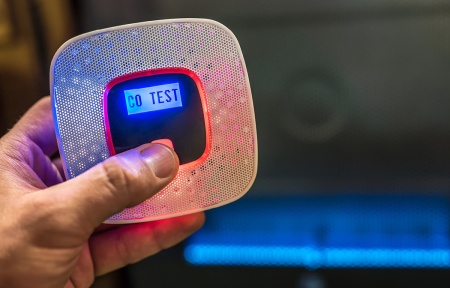
The Federal Motor Carrier Safety Administration (FMCSA) has two new rules set to go into effect in early 2020. One establishes an online clearinghouse for information on drug and alcohol testing information for commercial motor vehicle drivers, and the other imposes requirements for classroom and behind the wheel training for drivers before they may obtain a new Commercial Driver License or upgrade a CDL from Class B to Class A.
The FMCSA has uploaded to its website (fmcsa.dot.gov) an expanded list of Frequently Asked Questions and other information on the agency’s drug and alcohol testing clearinghouse rule. The new rule goes into effect on January 6, 2020.
The web page allows employers and drivers to subscribe to receive emails from the agency with news, updates and information to help prepare to use the clearinghouse. Employers and drivers will be able to register with the clearinghouse beginning in fall 2019 to input and access data in the system once it becomes effective.
Once the rule goes into effect, companies must be registered with the clearinghouse and will have to input data on CDL drivers who test positive for drugs or alcohol or who refuse a DOT test. Prospective employers will have to check the clearinghouse database on all driver applicants, with the driver’s written permission, to determine if the applicant has any drug or alcohol test violations.
For the first three years the rule is effective, employers will still have to check a driver applicant’s drug and alcohol testing history with prior employers for the previous three years. Once the rule has been in effect for three years, that additional check will be eliminated.
The entry-level driver training requirements go into effect February 7, 2020. These are minimum training standards for certain individuals applying for their commercial driver’s license for the first time; an upgrade of their CDL (e.g., a Class B CDL holder seeking a Class A CDL); or a hazardous materials (H) endorsement for the first time. These drivers must complete a prescribed program of instruction provided by an entity that is listed on FMCSA’s Training Provider Registry before taking the CDL skills test.
The FMCSA will submit training certification information to state driver licensing agencies, who may only administer CDL skills tests to applicants for the Class A and B CDL, and/or the knowledge test for the H endorsement, after verifying the certification information is present in the driver’s record.
The core and endorsement curricula generally are subdivided into theory (knowledge) and behind-the-wheel (BTW) (range and public road) segments. There is no minimum number of hours that driver trainees must spend on the theory portions of any of the individual curricula. However, training providers must provide instruction in all elements of the applicable theory curriculum and driver-trainees must receive an overall score of at least 80% on the theory assessment.
Companies may provide the training to their own entry-level drivers, or use any third-party instruction entity, but the instruction program must be listed on the National Driver Training Registry as certified to meet the training standards. The training provider must not issue the training certificate unless the driver trainee demonstrates proficiency in performing all required BTW skills.
Citing technical issues, the FMCSA has recently proposed delaying implementation of two portions of the driver training rule for an additional two years.
The proposed extension, which is likely to become final, would only apply to: (1) the date for training providers to upload entry-level driver training certification information into the Training Provider Registry and (2) for State Driver Licensing Agencies to receive driver-specific ELDT information. The implementation dates for these two provisions would be extended from February 7, 2020 to February 7, 2022.
The FMCSA notice states this proposal would allow the agency additional time to complete development of the electronic interface that will receive and store ELDT certification information from training providers and transmit that information to the SDLAs. The proposed extension would also provide SDLAs with sufficient time to modify their information technology systems and procedures, as necessary, to accommodate their receipt of driver specific ELDT data from the TPR.
The remainder of the rule, including the requirements for an entry-level CDL driver to complete classroom and behind the wheel training before taking the CDL exam, will go into effect as planned on February 7, 2020.






